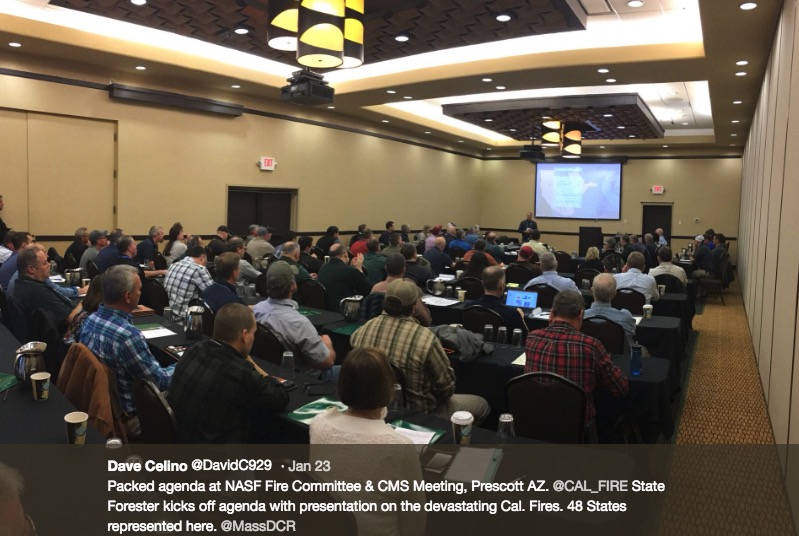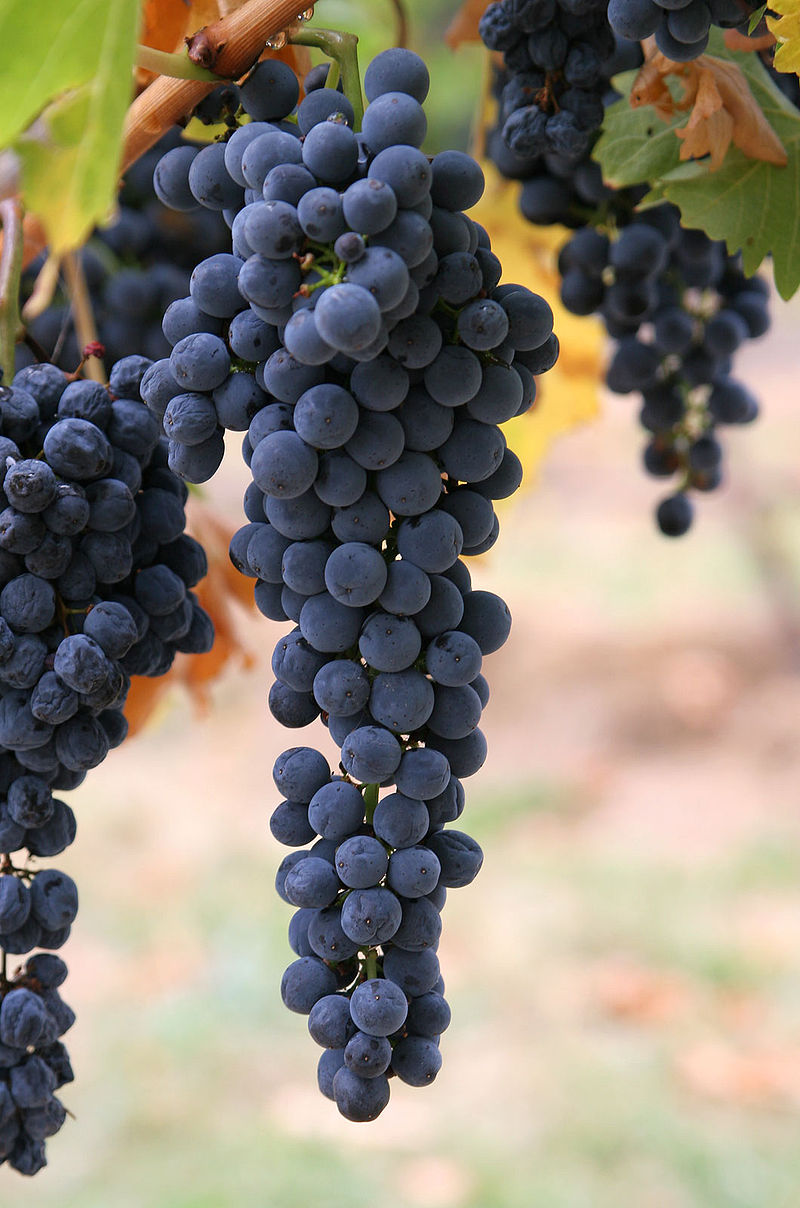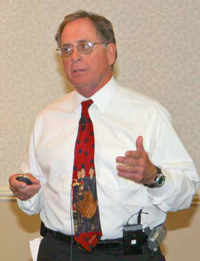 This week in Prescott, Arizona the National Association of State Foresters held their annual “Chiefs, Managers and Supervisors Meeting”. The goal of the 120 attendees was to discuss the policies, technologies, and procedures that will improve the efficiency and effectiveness of fighting wildfires.
This week in Prescott, Arizona the National Association of State Foresters held their annual “Chiefs, Managers and Supervisors Meeting”. The goal of the 120 attendees was to discuss the policies, technologies, and procedures that will improve the efficiency and effectiveness of fighting wildfires.
One product from the event was a list of the top five lessons learned:
- Change starts with coordinated leadership. The work the nation’s state foresters are doing together to improve wildfire preparedness, detection, and suppression is critical to protecting communities small and large across the country. When state foresters lead the charge on these issues, and act as one, their voice is amplified in Congress – and more importantly – outside of Congress in the public domain where change-making starts.
- Speak the same language and use the same metrics whenever possible. When the states share similar language to characterize their wildfire fighting programs, national and regional wildfire fighting coordination is improved and lives are saved. Additionally, with a standardized method of measuring wildfire costs across the nation, we can track exactly where money for wildfire prevention and suppression goes and to what benefit, ultimately allowing for more efficient resource allocation.
- Stay the course on advocating for federal forest management and wildfire funding reform. A positive resolution is closer than ever. The USDA, Department of the Interior, the International Association of Fire Chiefs, and other national partners are in agreement on the broad strokes of federal forest management reform and a wildfire funding fix, which means the state foresters are in a good position to propose and advocate for what specific changes need making.
- Words matter; and actions even more. It’s time to stop talking about how we can better support and protect wildland firefighters; how we can better contain costs, employ new technologies, and help prevent catastrophic post-fire damage. In many cases, we have the information we need to set smarter federal forest management and wildfire policies. It’s time to put that information to use – to change policies to save lives.
- Sharing processes that work, works. Better decisions and better outcomes come out of sharing experiences and expertise between state forestry and fire agencies. One of the best ways to contribute to cooperative networks is to get connected.
Thanks to @azstateforestry for a fantastic staff ride tour of Granite MT Hotshots Memorial in Yarnell AZ. For state foresters fire Committee. Incredible experience. Hallowed ground. pic.twitter.com/73wHVOpeqq
— Dave Celino (@DavidC929) January 24, 2018



